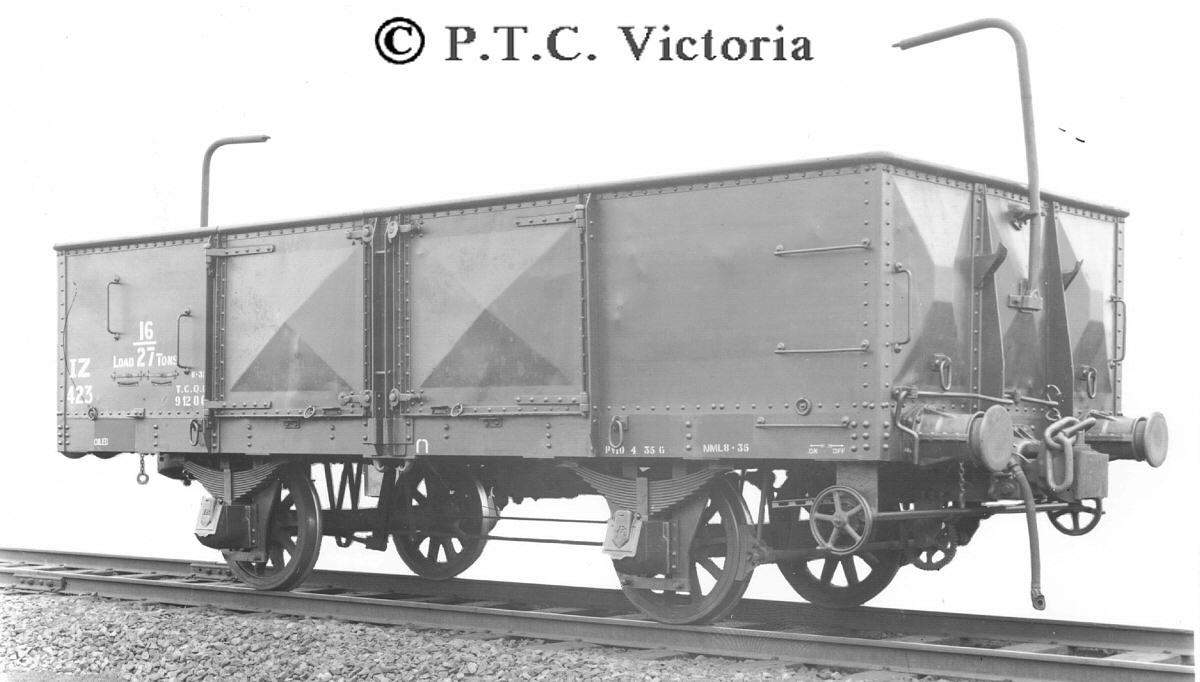

The IZ wagons were introduced to service in 1928 and were built through to 1936. It seems likely the design was inspired by the bogie _E__ wagons of 1925, though door widths and side heights vary slightly.
The original construction was rivettted body, outside sill underframe and pressed body panels. Later construction was of the inside sill, welded type with sheet panels.
The capacity of the wagons as introduced was 25 ton. The second batch entered service as dual capacity "16/25" tons. From 1932 the capacity was lifted to 27 ton. This rating remained until the 1960's, despite increases of one ton for most other classes when the buffers were removed.
IZ 600 was issued to traffic on 28/3/1931, two months after the last rivetted wagon. At the time the wagon was billed as the "First All-Welded Four Wheel Open Wagon" in the world. This vehicle appears not to have been placed into general traffic. In 1933 it was mentioned in correspondence as running between Newport Workshops and Bendigo in workshops traffic.
Further construction of IZ wagons continued to 1935. In 1935 IZ wagons in the range 911 - 999 were placed in traffic, most being listed as "bulk grain". Within three months, the first _GZ_wagons were issued to service, numbers 1000 and 1001.
The "bulk wheat" IZ wagons were recoded to GZ. This left the IZ number block as 1 - 910, 1031 - 1100. the GZ numbers became 911 - 1030, 1101 - 2000.
By about 1954 there were sufficient _GY_ wagons in service to replace both GZ wagons and the _G__ grain trucks ex _I__ wagons. GZ wagons were progressively recoded to IZ from about 1956 with some GZ's in service until 1965. With the inclusion of _GZ_ conversions the IZ number block became 1 - 2000.
In the late 1950's, some attempt was made to rebuilt the early rivetted bodies. The welded _HY_ body design was used and the code for these wagons became _HZ_.
With derailment problems in 1963/1964, the IZ wagons were modified and derated to a 22 ton capacity class coded _RY_.